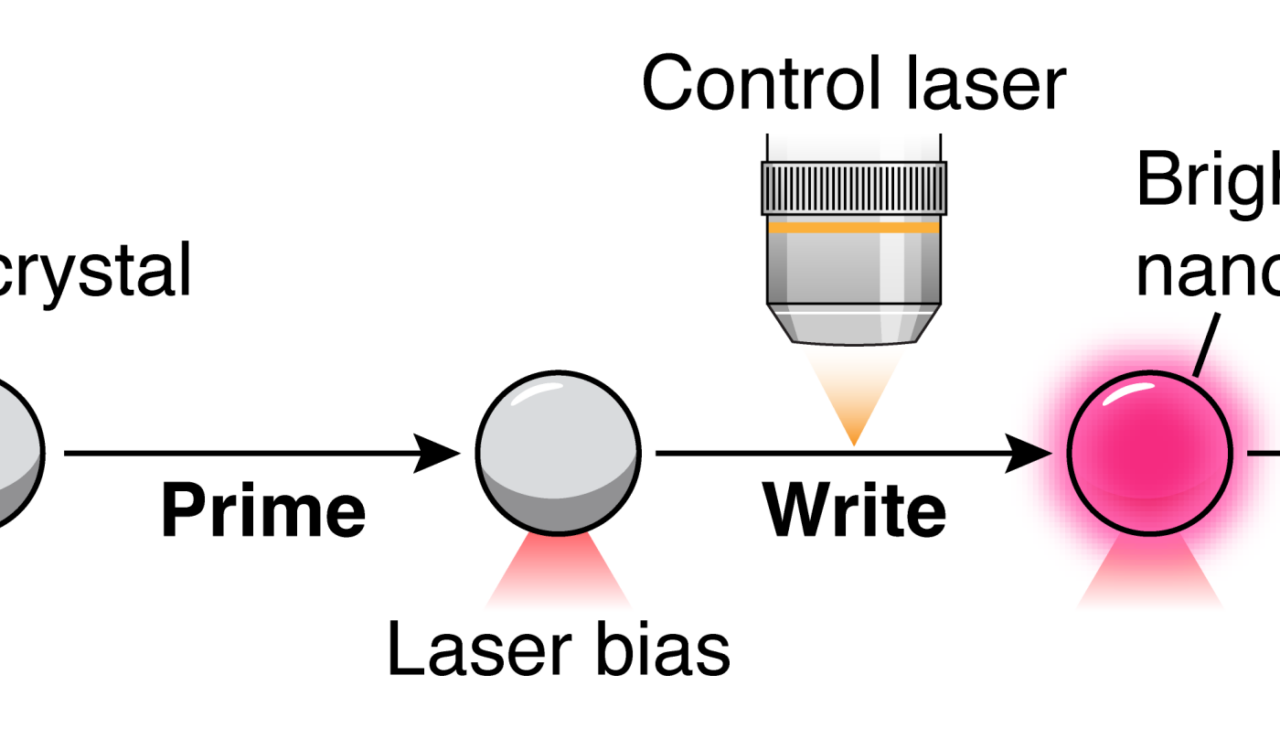Scientists including an Oregon State University chemistry researcher have taken a key step toward next-generation optical computing and memory with the discovery of luminescent nanocrystals that can be quickly toggled from light to dark and back again.
“The extraordinary switching and memory capabilities of these nanocrystals may one day become integral to optical computing – a way to rapidly process and store information using light particles, which travel faster than anything in the universe,” said Artiom Skripka, assistant professor in the OSU College of Science. “Our findings have the potential to advance artificial intelligence and information technologies generally.”
Published in Nature Photonics(Link is external), the study by Skripka and collaborators at Lawrence Berkeley National Laboratory, Columbia University and the Autonomous University of Madrid involves a type of material known as avalanching nanoparticles.
Nanomaterials are tiny bits of matter measuring between one-billionth and one-hundred-billionths of a meter, and avalanching nanoparticles feature extreme non-linearity in their light-emission properties – they emit light whose intensity can increase massively with a small increase in the intensity of the laser that’s exciting them.
The researchers studied nanocrystals composed of potassium, chlorine and lead and doped with neodymium. By themselves, the potassium lead chloride nanocrystals do not interact with light; however, as hosts, they enable their neodymium guest ions to handle light signals more efficiently, making them useful for optoelectronics, laser technology and other optical applications.
“Normally, luminescent materials give off light when they are excited by a laser and remain dark when they are not,” Skripka said. “In contrast, we were surprised to find that our nanocrystals live parallel lives. Under certain conditions, they show a peculiar behavior: They can be either bright or dark under exactly the same laser excitation wavelength and power.”
That behavior is referred to as intrinsic optical bistability.
“If the crystals are dark to start with, we need a higher laser power to switch them on and observe emission, but once they emit, they remain emitting and we can observe their emission at lower laser powers than we needed to switch them on initially,” Skripka said. “It’s like riding a bike – to get it going, you have to push the pedals hard, but once it is in motion, you need less effort to keep it going. And their luminescence can be turned on and off really abruptly, as if by pushing a button.”
The low-power switching capabilities of the nanocrystals align with the global effort to reduce the amount of energy consumed by the growing presence of artificial intelligence, data centers and electronic devices. And not only do AI applications require substantial computational power, they are often constrained by limitations associated with existing hardware, a situation this new research could also address.
“Integrating photonic materials with intrinsic optical bistability could mean faster and more efficient data processors, enhancing machine learning algorithms and data analysis,” Skripka said. “It could also mean more-efficient light-based devices of the type used in fields like telecommunications, medical imaging, environmental sensing, and interconnects for optical and quantum computers.”
Additionally, he said, the study complements existing efforts to develop powerful, general-purpose optical computers, which are based on the behavior of light and matter at the nanoscale, and underscores the importance of fundamental research in driving innovation and economic growth.
“Our findings are an exciting development, but more research is necessary to address challenges such as scalability and integration with existing technologies before our discovery finds a home in practical applications,” Skripka said.
The U.S. Department of Energy, the National Science Foundation and the Defense Advanced Research Projects Agency supported the research, which was led by Bruce Cohen and Emory Chan of Lawrence Berkeley, P. James Schuck of Columbia University and Daniel Jaque of the Autonomous University of Madrid.
